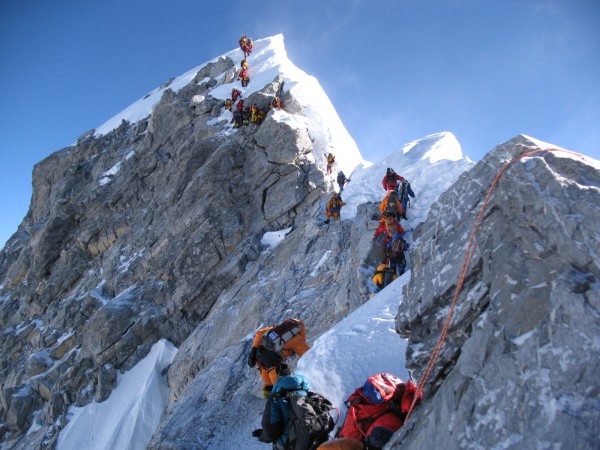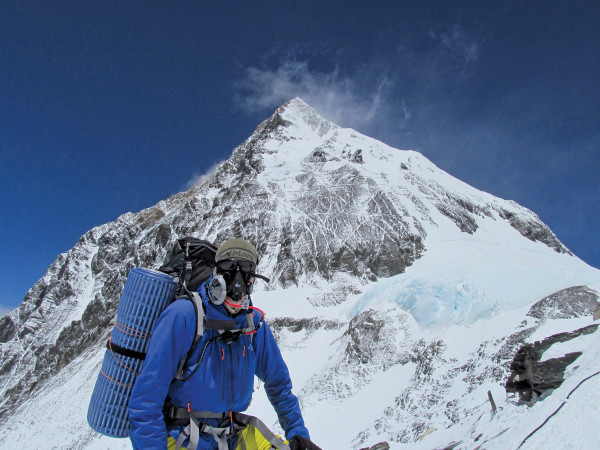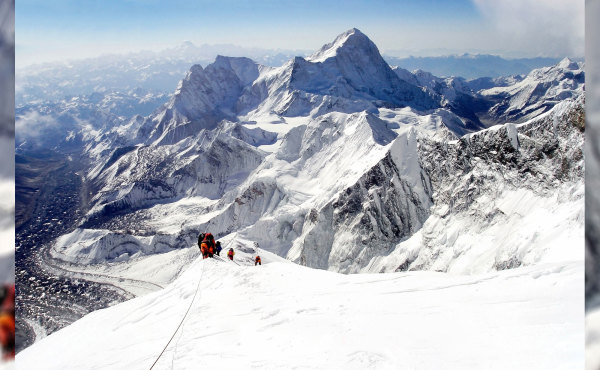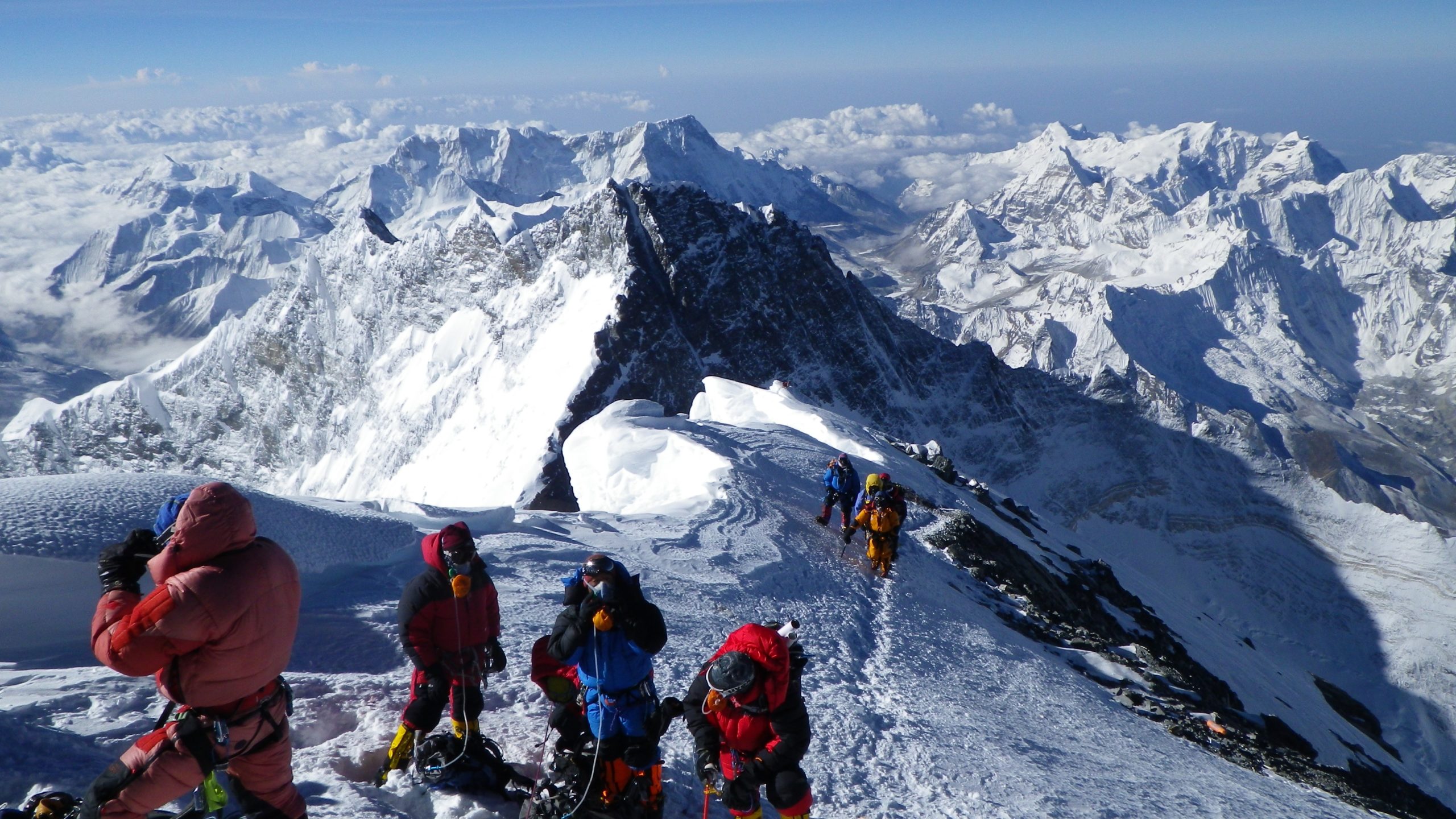Preparing to survive Everest should not be taken lightly. At an altitude of 8,850 metres, and a body count of over three hundred, you will need to be in peak mental and physical condition in order to make it back down to regular old terra firma.
Here’s how you will need to train on a six month timeline in order to stay alive, as per veteran mountaineers such as a one Stacy Taniguchi:
Key aspects:
- Climbing conditioning — pack-loaded uphill hiking, walking, and stair climbing.
- Strength training — for the lower body and core.
- Cardiovascular training — including both aerobic and anaerobic workouts with and without pack weight.
- Flexibility training — exactly what it sounds like.
By the end of your training, you should be able to:
- Walk and climb moderate snow and ice slopes for up to six to eight hours a day, carrying up to 20 kilograms of supplies on your back.
- Recover from a hard day’s climbing within an eight to twelve hour period to resume another day of hard physical exertion.
- Physically and mentally go the extra mile when called upon for survival reasons.
6 months prior to climb (aerobic emphasis, strength incorporation)

- Monday: Run for thirty minutes at a “conversation” pace. Push consistency, try not to stop. Strength train today with the sit-ups, pull-ups, and push-ups routine. If you have access to weights –
- Three sets of bent rowing exercises with weights that will allow you to get ten to fifteen repetitions out of every set, but no more than fifteen.
- Three sets of military presses with weights that will allow you to get eight to ten repetitions out of every set, but no more than ten.
- Basically any exercise that will build back, shoulder, arms, and ab muscles. While we don’t advocate the skipping of leg day, leg muscles will develop naturally through the aerobic exercises.
- Stretch!
- Tuesday: Bike (or any another aerobic exercise) for thirty minutes or longer. Try to explore different terrains, so go somewhere different than Monday’s workout.
- Wednesday: Strength workout today. You may want to include a few more strength exercises than you did on Monday. Rest from aerobic exercise.
- Thursday: Run for thirty minutes like you did on Monday. Again, try a different route. Maybe a wilderness trail if convenient.
- Friday: Cross-country ski (or any another aerobic exercise) for thirty minutes or longer. Repeat Monday’s strength workout.
- Saturday: Rest day, do something recreational. Go climbing or hiking for fun.
- Sunday: Rest day.
5 months prior to climb (mountaineering fitness foundation)
Aerobic workouts: four days a week minimum with no more than two days rest per week. Substitute one rest day for a recreational day. Increase the duration of these workouts to at least forty minutes, ensure sessions are a continuous effort.
Strength workouts: remain at three days per week. Try increasing weight levels and reps, but do not exceed the maximum reps stated earlier.
Additional:
Include hill climbing or stair climbing as part of your weekly routine at least once a week but no more than twice a week. Find a long hill or flights of stairs to climb. The duration of the climb should be no less than five minutes. Repeat the climb until you have completed a thirty-minute session. If you find something that allows you to climb continuously for thirty plus minutes before coming back down, that would be excellent. Carry a backpack that has about twenty pounds (ten kilos) in it. Avoid stopping during this routine. This workout is probably the best simulation of what you will be doing when climbing.
(Caution: Do not carry too much weight in your pack now because the coming down portion of this workout can kill your knees if you are not [used] to the weight.)
4 months prior to climb (endurance building)

Aerobic workouts: five days per week, one day rest. Increase workout sessions to a minimum of forty-five minutes. Focus on working continuously and consistently throughout the entire forty-five minutes sessions. Continue to include hill or stair-climbing workouts with a backpack at least once a week. Increase the weight carried in your backpack by ten pounds (five kilos) and the duration of sessions to about thirty-five to forty-five minutes. You can substitute one or two of your aerobic workouts with the hill or stair climbing session. Again, be cautious with the treatment of your knees on the down hills.
Strength workouts: increase to four days a week. Up the weights and repetitions, but again, do not exceed maximum repetitions already mentioned.
Additional:
At this point of your training you may find that motivation might be lacking at times. Don’t give up! Be creative, find new places to train, more friends to train with, go climbing to get psyched, read books on mountaineering, and watch videos or slide shows of other mountaineering adventures.
3 months prior to climb (mental & physical training really kick in)
Aerobic workouts: remain at five days per week and take one rest day per week. Sessions should now last a minimum of fifty minutes. Incorporate a shortened “stress” or anaerobic workout session for one day of the week, around thirty minutes a session. Get your heart rate up to around 130 to 180 beats per minute for at least one-minute duration at a time, but not longer than two minutes. Recuperate between high-intensity bursts for three minutes before starting again.
Physiologically, the faster your heart rate gets during stress exercises and the less rest time you give yourself in between, the more training benefit you will receive. Work hard during this session and feel relatively exhausted at its end, eg. running a hilly course, sprinting the up-hills in a high-intensity burst, then jogging the down-hills and flats for recuperation. This type of workout will naturally build up your red blood cell count, which is responsible for carrying oxygen to your cells, dispose of lactic acid.
Strength workouts: remain at four days per week. Increase weights and repetitions accordingly. Continue hill and/ or stair climbing workouts, but twice a week now. This can be a replacement of two of your aerobic sessions. Increase your backpack weight by another ten pounds (five kilos). Consider carrying water for weight so you can empty them at the top of your elevation gain (if you’re not repeating the climb that session). This way you do not have to carry the weight down and make it a lot easier on your knees. But do keep in mind you will be carrying heavy loads down the mountain when the expedition is over, so strengthening your leg muscles for down hills needs to be factored in.
Try to get out into the wilderness once or twice to test your gear. Make sure your boots are comfortable, apparel fits, and functions as they are meant to. This includes tent that set up easily, backpack that fits nicely as well as being able to handle the heavy loads, sleeping bags that are comfortable, and familiarise yourself with the cooking gear. You don’t want to find out they don’t work right the hard way, a few thousand metres up. You may substitute two of your aerobic workouts for a wilderness outing if you stay overnight.
Additional:
You may want to consider taking a good daily multiple vitamin with the RDA of iron, if you do not already do so. This will make sure that your body is getting its recommended amounts of vitamins and minerals that you might need with your increased exercise routines. The iron will assure that your blood will have the iron needed to maintain the haemoglobin in your red blood cells (good for carrying oxygen). Don’t forget your daily intake of water and eat a healthy diet.
2 months prior to climb (maintenance)

Aerobic workouts: continue to clock in five days per week and at least one rest day. Workouts should now be a minimum of an hour each session, with one of the sessions a week lasting at least an hour and a half. Continue with a minimum of one stress session per week and shorten the rest periods between the high-intensity sections. Your uphill and stair climbing workouts should now be a regular substitute for an aerobic session twice a week with at least forty pounds (twenty kilos) in the backpack. Start wearing your climbing boots during these sessions to get used to them.
Strength training: all endurance. Continue to train four times per week, but use with two of those days for high reps done as quickly as possible while maintaining form.
If you have someone who can time you, do your exercises in the same number of sets, but use lighter weights (decrease your resistance by 40% of what you used before) and do as many repetitions as you can in a minute per set.
Use weights that get you as close to complete exhaustion at the end of the minute. If you’re doing this alone, exercise until failure. The other two days should be used to maintain your routine from last month.
Additional:
Again this month, get out to the wilderness and test your gear. Get the kinks out of them and you. Remember to still drink your quarts of water, eat well, and get lots of rest.
1 month prior to climb (maintenance & final push)
This is it. All that you’ve been working up to. Continue to train as hard as ever without breaking your body before you break any limits and take extremely good care of your health. Test your gear thoroughly, and just try to get acclimated to the scenarios and environment you will soon encounter as best as possible.

Monitor your intensity and fatigue. And remember, if it’s too easy, it’s time to bump it up a level. The goal is to get fit, not complacent. Also hydrate!
















